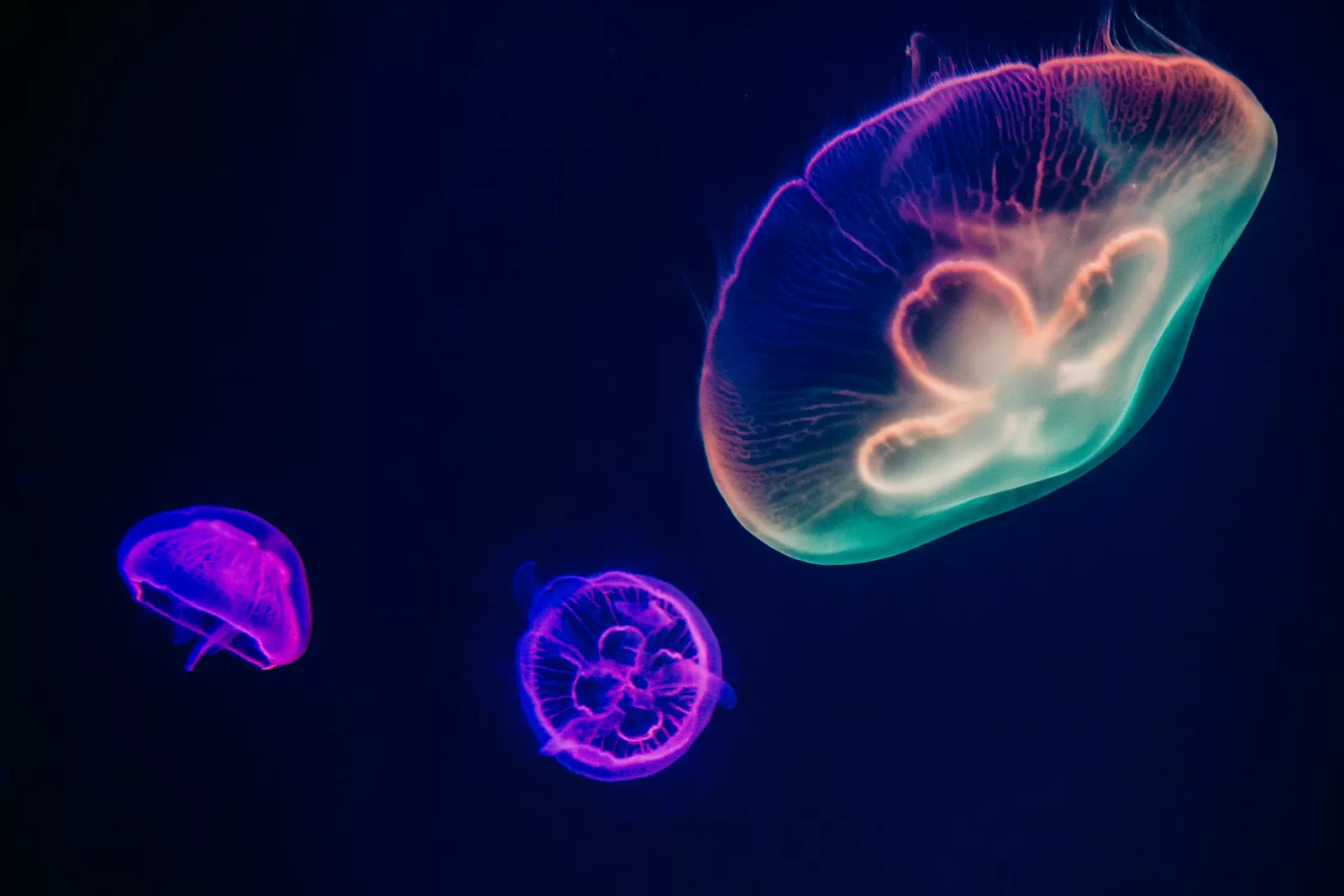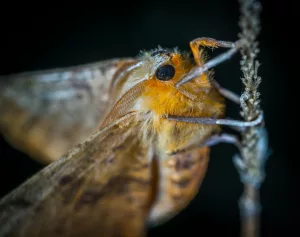Jellyfish are among the oldest and most fascinating creatures in the ocean. With their translucent bodies, mesmerizing movements, and sometimes dangerous stings, they inspire a mix of awe and fear. But beyond their captivating appearance, jellyfish are remarkable organisms that challenge what we know about marine life, evolution, and even biology itself.
In this article, we’ll uncover 14 unbelievable facts about jellyfish that highlight their unique biology, behavior, and role in the ecosystem. By the end, you’ll gain a deeper appreciation for these extraordinary creatures and the crucial role they play in our oceans.
1. Jellyfish Have Existed for Over 500 Million Years
Jellyfish are one of the oldest living organisms on Earth, with fossil evidence dating back more than 500 million years. This makes them older than dinosaurs and even many plants. Some estimates suggest they could be as old as 700 million years, placing them among the first complex animals to evolve.
What makes this longevity even more impressive is that jellyfish have survived multiple mass extinction events. Their simple body structure, efficient reproduction, and adaptability have allowed them to persist through dramatic changes in Earth’s climate and ocean environments. While other species have come and gone, jellyfish have remained, a testament to their resilience and evolutionary success.
2. They Are Not Actually Fish
Despite their name, jellyfish are not fish. They belong to a group of animals called cnidarians, which also includes corals, sea anemones, and hydras. Jellyfish are invertebrates, meaning they lack a backbone, and are composed primarily of water—about 95% to be exact.
Instead of bones, a heart, or even a brain, jellyfish rely on a simple nerve net to detect changes in their environment and coordinate their movements. This simplicity sets them apart from most other animals and makes them a unique example of how life can thrive without complex systems.
3. Jellyfish Come in an Incredible Range of Sizes
Jellyfish vary dramatically in size, from the tiny Irukandji jellyfish, which is about the size of a fingernail, to the massive lion’s mane jellyfish, whose tentacles can stretch up to 120 feet long—making it one of the longest animals in the world.
The diversity in jellyfish size reflects their ability to occupy a wide range of ecological niches. Smaller jellyfish are often part of the planktonic community, drifting with ocean currents and serving as food for larger animals. In contrast, giant jellyfish like the lion’s mane dominate their environments and can be both predators and competitors for other marine species.
4. They Can Reproduce in Two Different Ways
Jellyfish have a fascinating life cycle that includes both sexual and asexual reproduction. Adult jellyfish, known as medusae, release eggs and sperm into the water, where fertilization occurs. The resulting larvae, called planulae, settle onto a hard surface and develop into polyps. These polyps reproduce asexually by budding, creating clones of themselves.
At some point, the polyps produce young jellyfish, or ephyrae, which mature into adult medusae. This dual reproductive strategy allows jellyfish populations to grow rapidly under favorable conditions, making them incredibly resilient. In some cases, polyps can lie dormant for years and reactivate when environmental conditions improve, ensuring the survival of the species even after adverse events.
5. Some Jellyfish Are Functionally Immortal
The Turritopsis dohrnii, often called the “immortal jellyfish,” has gained fame for its ability to reverse its life cycle. When stressed, injured, or nearing the end of its life, this jellyfish reverts from its adult medusa stage to the polyp stage, essentially starting its life over.
This remarkable process, known as transdifferentiation, involves the reprogramming of its cells to become new types of cells, allowing the jellyfish to escape death and potentially live indefinitely under ideal conditions. While not all jellyfish share this capability, the Turritopsis dohrnii’s unique trait has sparked scientific interest in aging and regenerative medicine.
6. Jellyfish Don’t Have Brains, Hearts, or Bones
One of the most astonishing aspects of jellyfish biology is their simplicity. Lacking a brain, jellyfish rely on a decentralized nerve net to detect light, vibrations, and changes in water chemistry. This nerve net coordinates their movements and feeding behavior, but it doesn’t process information in the way a brain does.
Jellyfish also lack a heart and bones. Instead, they use the water around them to provide structure and circulate nutrients and oxygen. Their gelatinous body, called the mesoglea, acts as a skeleton and allows them to maintain buoyancy. This minimalistic design is a marvel of evolution, enabling them to survive and thrive in diverse marine environments.
7. Their Stingers Are Both a Defense Mechanism and a Hunting Tool
Jellyfish are equipped with specialized cells called cnidocytes, which contain tiny harpoon-like structures called nematocysts. These nematocysts fire when triggered, injecting venom into their prey or predators.
The venom serves two primary purposes: subduing prey and deterring predators. For many species, the venom paralyzes small fish or plankton, making it easier to capture and consume them. In some jellyfish, like the box jellyfish, the venom is potent enough to cause severe pain, paralysis, or even death in humans.
Despite their reputation for being dangerous, most jellyfish stings are harmless to humans and result in mild irritation. However, caution is always advised when swimming in jellyfish-inhabited waters.
8. Jellyfish Can Glow in the Dark
Bioluminescence, the ability to produce light, is a common feature in many jellyfish species. This glowing effect is caused by proteins that emit light when they interact with oxygen. The purpose of bioluminescence varies depending on the species, but it often serves as a defense mechanism to confuse predators, attract prey, or signal other jellyfish.
One of the most famous bioluminescent jellyfish is the Atolla jellyfish, also known as the “alarm jellyfish.” When threatened, it emits a pulsating ring of light, resembling an emergency beacon. This display can startle predators or attract larger predators to attack the jellyfish’s assailant.
9. Jellyfish Blooms Can Disrupt Ecosystems
Under certain conditions, jellyfish populations can explode, forming massive groups known as blooms. These blooms can contain millions of individuals and stretch across vast areas of the ocean.
Jellyfish blooms are often linked to human activities such as overfishing, which reduces predators that would normally keep jellyfish populations in check, and climate change, which alters ocean conditions in ways that favor jellyfish growth. While blooms are a natural phenomenon, they can disrupt marine ecosystems by consuming large amounts of plankton, outcompeting other species, and clogging fishing nets or power plant intake systems.
10. Some Jellyfish Are Deadly to Humans
While most jellyfish are harmless to humans, a few species can deliver life-threatening stings. The box jellyfish, found in the waters of the Indo-Pacific, is one of the most dangerous. Its venom contains toxins that attack the heart, nervous system, and skin cells, and a sting can cause cardiac arrest or death within minutes.
Another dangerous species is the Irukandji jellyfish, whose venom causes a condition known as Irukandji syndrome. Symptoms include severe pain, nausea, and an impending sense of doom, which can last for hours or days. Despite their small size, Irukandji jellyfish pack a powerful punch, highlighting the diverse and sometimes hazardous nature of jellyfish venom.
11. They Play a Vital Role in Marine Ecosystems
Jellyfish are more than just mesmerizing creatures; they are integral components of marine ecosystems. As both predators and prey, they influence food webs and nutrient cycles.
By feeding on plankton, jellyfish help regulate plankton populations, preventing overgrowth that could harm other marine life. In turn, jellyfish serve as food for various predators, including sea turtles, sunfish, and some seabirds. Even after death, jellyfish contribute to the ecosystem as their decomposing bodies provide nutrients for scavengers and bottom-dwelling organisms.
12. They Can Survive in Extreme Conditions
Jellyfish are among the most adaptable creatures in the ocean, capable of thriving in conditions that would be inhospitable to many other species. Some jellyfish can survive in oxygen-poor waters, where they outcompete less resilient animals.
In addition, jellyfish have been found in some of the deepest parts of the ocean, tolerating immense pressure and low temperatures. Their ability to adapt to a wide range of environments is one reason why they have persisted for hundreds of millions of years.
13. Jellyfish Are Helping Scientists Understand Regeneration
The unique biology of jellyfish has made them a focus of scientific research, particularly in the field of regeneration. Some jellyfish species can regrow damaged or lost body parts, offering insights into the mechanisms of cellular repair and renewal.
The immortal jellyfish, in particular, has sparked interest in studying aging and disease. By understanding how these jellyfish reverse their life cycles, scientists hope to unlock new possibilities for regenerative medicine and aging research.
14. Human Activity Is Increasing Their Numbers
While many marine species are declining due to overfishing, pollution, and climate change, jellyfish are thriving in these altered conditions. Warmer ocean temperatures accelerate their growth and reproduction, while pollution and runoff provide additional food in the form of algae blooms.
Overfishing also removes predators and competitors, giving jellyfish a competitive advantage. As a result, jellyfish populations are increasing in some areas, leading to more frequent blooms and their associated impacts on fisheries, tourism, and marine ecosystems.
Jellyfish are far more than simple, floating creatures. Their unique biology, ancient lineage, and ecological importance make them one of the ocean’s most fascinating inhabitants. From their bioluminescent displays to their role in scientific discovery, jellyfish challenge our understanding of life and evolution.
As their populations grow in response to human activity, jellyfish are becoming increasingly influential in shaping marine ecosystems. By studying these incredible animals, we not only uncover the secrets of their survival but also gain valuable insights into the health of our oceans and the interconnectedness of life on Earth.




